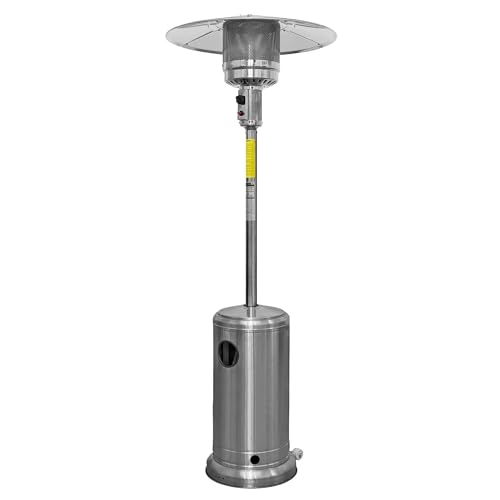Undeniable Proof That You Need Cheap Patio Gas

Cheap Patio Gas Heaters
Patio heaters come in a wide range of sizes and styles. Some patio heaters are hardwired and require professional installation. Others rely on propane or natural gases to warm your patio.
Mobile gas cylinders are available in sizes ranging from 5kg bottles for patio use to 13kg propane cylinders. They work with traditional BBQs mobile heaters, mobile barbecues and Ooni pizza ovens.
Cost
A gas heater for your patio to your business or home can increase the value of your property and the number of people using your outdoor space. It's a cost-effective alternative to other heating systems for outdoor use, like a wood-burning fireplace pit or propane heaters. A patio gas heater can be used indoors as well to provide a cozy atmosphere in winter.
The price of gas for patios varies depending on the model and size of the appliance. For instance, a 5kg bottle of gas for your patio will cost about PS28. This includes a clip-on regulator** that is compatible with the majority of barbecues and patio heaters. Some patio heaters may require an additional regulator.
A propane gas cylinder is the ideal choice for BBQs, pizza ovens and tabletop heaters. It is inexpensive and has no odor. It is easy to move and store. Most propane-powered appliances are durable and safe. They last for an extended period of time and are an excellent choice for homeowners and businesses that require savings on heating costs.
Propane is a green clean-burning fuel that can be used for heating, cooking, and other applications. It is cheaper than electricity and has lower maintenance costs. It also is less affected by price increases when oil prices increase.
Efficiency

The use of gas patio heaters is a reliable method to heat up an outdoor space. They can generate powerful heat output and can quickly warm an area up to 215ft2. They do not require any installation and can be easily moved. They can also be switched on or off using the remote control or programed timers. Some models even feature an automatic shut-off function that can ensure that accidental fires are not started.
When it comes to choosing the gas type to use, there are two options that are available: propane and butane. Butane is cooler than propane. Both are LPG however they differ by their boiling point as well as the speed of boiling. Butane is usually stored in green cylinders and is known under the name "patio gas" while propane is stored in red cylinders. Both kinds of gas can be used with most standard BBQs and patio heaters, and are readily available at many garden and home centers.
Gas bottles for patios are designed to fit into your BBQ or heater and come in a variety of sizes that range from 5kg to 13kg. Some even have a gauge to inform you when the gas is low. They are compatible with standard BBQ regulators. You can save money by using butane instead propane. Many appliances can be modified to run with either fuel.
gas patio heater small is most efficient in hot temperatures. It is ideal for BBQs, camping gas stoves and portable heaters. However, it is less effective in the winter because it isn't able to flow at extremely low temperatures. It is a low toxicity fuel that has a low carbon footprint and is a great choice for those who are concerned about their environmental impact.
When using a gas patio heater it is important to follow the manufacturer's guidelines on how to operate and maintain the appliance. This includes following the safety guidelines to prevent carbon monoxide poisoning, and making sure that the appliance isn't exposed to naked flames or high temperatures. Patio heaters should be put in areas that have adequate ventilation and not used indoors.
Safety
It is essential to consider safety when using propane gas on your hearth or patio. These safety precautions include safe handling and storage, the use of Personal Protective Equipment (PPE) and establishing emergency procedures. For example, cylinders must be stored in a designated location away from ignition sources and should not be moved. If there is a leak, the gas should be shut off and the personnel evacuated. All cylinders must be clearly marked with the contents and information for the supplier. They should also have a valve that is able to be opened manually with no force.
